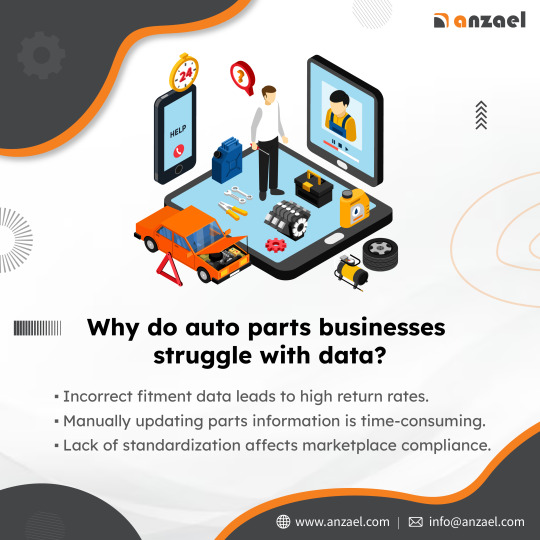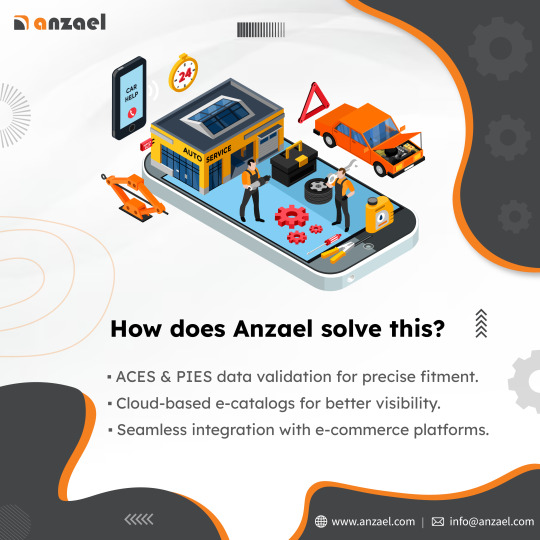#cloud marketplace integration
Explore tagged Tumblr posts
Text
The value of engaging Cloud Advisory services for your company
At CONNACT, our Cloud Advisory services are designed to help businesses confidently navigate the complexities of cloud transformation. From assessment to optimisation, we provide end-to-end guidance that aligns your technology strategy with your business goals—so you can scale smarter, faster, and more securely.
Your Cloud Journey Starts with Strategy
Moving to the cloud isn't just a tech upgrade—it's a business decision. CONNACT's experts work with your leadership team to develop a clear, customised cloud roadmap that prioritises cost-efficiency, performance, and innovation. Whether you're migrating legacy systems or launching new digital platforms, we help you make informed decisions every step of the way.
Our Core Advisory Services
Cloud Readiness Assessment – Assess the suitability of the cloud and the current IT infrastructure.
Cloud Strategy & Planning – Define objectives, select the right model (public, private, hybrid), and build a roadmap.
Architecture Design – Create cloud architectures that are high-performing, scalable, and secure.
Cost Optimisation & Forecasting – Maximise ROI with tailored spend management and cost control strategies.
Governance & Compliance – Make sure the security and regulatory requirements are met by your cloud environment.
Multi-Cloud & Vendor Advisory – Navigate AWS, Azure, Google Cloud, or multi-cloud environments with confidence.
Technology-Agnostic, Business-Focused
CONNACT takes a vendor-neutral approach, ensuring you get objective advice that fits your business, not just a specific platform. We align cloud initiatives with your operational goals, whether that's increasing agility, enhancing customer experience, or reducing overhead.
Who We Serve
Our cloud advisory clients range from startups and SMBs to large enterprises across industries like finance, healthcare, logistics, and retail. Whether you're starting your cloud journey or optimising an existing environment, we offer flexible, scalable guidance tailored to your needs.
Future-proof your business with CONNACT's Cloud Advisory Services.
Partner with us for something that delivers long-term value. Ready to build smarter in the cloud? Let's get started.

0 notes
Text
Logitech Unveils the MX Creative Console
Logitech has officially launched its highly anticipated MX Creative Console, a revolutionary tool aimed at transforming how digital creators work. This innovative product is designed to provide creators with instant access to critical controls and fully customizable features, simplifying workflows and automating repetitive tasks, making it an ideal companion for artists, designers, and content…
#3D design#Adobe#Adobe Creative Cloud#Adobe plugins#After Effects#AI integration#AI workflows#analog navigation#artists#Audition#carbon footprint#content creation#creative professionals#creative tools#creators#custom controls#customization#deep integration#Design#designers#dialpad#digital creation#dynamic display keys#free membership#FSC-certified#Generative Fill#Illustrator#keypad#Logi Marketplace#Logi Options+
0 notes
Text
What is the most awesome Microsoft product? Why?
The “most awesome” Microsoft product depends on your needs, but here are some top contenders and why they stand out:
Top Microsoft Products and Their Awesome Features
1. Microsoft Excel
Why? It’s the ultimate tool for data analysis, automation (with Power Query & VBA), and visualization (Power Pivot, PivotTables).
Game-changer feature: Excel’s Power Query and dynamic arrays revolutionized how users clean and analyze data.
2. Visual Studio Code (VS Code)
Why? A lightweight, free, and extensible code editor loved by developers.
Game-changer feature: Its extensions marketplace (e.g., GitHub Copilot, Docker, Python support) makes it indispensable for devs.
3. Windows Subsystem for Linux (WSL)
Why? Lets you run a full Linux kernel inside Windows—perfect for developers.
Game-changer feature: WSL 2 with GPU acceleration and Docker support bridges the gap between Windows and Linux.
4. Azure (Microsoft Cloud)
Why? A powerhouse for AI, cloud computing, and enterprise solutions.
Game-changer feature: Azure OpenAI Service (GPT-4 integration) and AI-driven analytics make it a leader in cloud tech.
5. Microsoft Power BI
Why? Dominates business intelligence with intuitive dashboards and AI insights.
Game-changer feature: Natural language Q&A lets users ask data questions in plain English.
Honorable Mentions:
GitHub (owned by Microsoft) – The #1 platform for developers.
Microsoft Teams – Revolutionized remote work with deep Office 365 integration.
Xbox Game Pass – Netflix-style gaming with cloud streaming.
Final Verdict?
If you’re a developer, VS Code or WSL is unbeatable. If you’re into data, Excel or Power BI wins. For cutting-edge cloud/AI, Azure is king.
What’s your favorite?
If you need any Microsoft products, such as Windows , Office , Visual Studio, or Server , you can go and get it from our online store keyingo.com
9 notes
·
View notes
Text
Another Internet Whitepaper
I'm just gonna get into there is no way to preface this.
1) content should be hosted in their own countries for which they are meant.
2) therefore the website should split into Nation->Sub-nation sections. So things for Michigan would be closer to those in Michigan. With U.S.->Michigan.
--"independent" Nations are just gonna have to deal with being lumped together into a united region. It's simply physics.
--country wide servers and clouds, and worldwide services will still be available; but we need to develop protocols to make it easier to distribute data and declutter the internet-cloud.
3) a separate Intranet for official use and security will need to be developed alongside this while also being completely disconnected from the worldwideweb.
4) Splits;
IP Addresses redesign;
[Country/Region]:[State/Province]:[individual]
[Individual] will need to be controlled by local The Internet Assigned Numbers Authority (IANA) branches; likely to be reassigned to DMVs and SoSs.
5) Separate protocols For;
Streaming Services
Social Media Services
Bidirectional Interactions (like games and Virtual Machines)
Pornography needs to be completely identifiable by textual Web address.
5) you local region will be defaulted, but can be changed by the browser and not be hard-wired in.
Not indicating a region will automatically default to the local internet.
So typing in FBI.GOV in the U.S. will lead to the FBI website, and if you type it in the UK it'll lead to Mi:5 or something.
6) Social Media protocols will have to be integrated with the E-Mail SMTP protocols. Which will encourage a more decentralized internet. This will *also* have to find a way to work with phone text messages.
7) Cable TV and Streaming services will have to use the same protocols.
8) Because there's phone integration here; a phone number may have to be closer to a social security number going forward. Which will both be bad for animosity, but allow for people to not need login information.
-- This will technically also need to apply to your House; which will have to have an assigned street address.
9) all of these need to be obfuscated to casual observers.
10) this will deprecate our phone companies and require them to work with cable TV and internet companies in order to create more equitable protocols.
11) the current IP address and Domain Registry systems need to be deprecated; as it does not suit its original purpose.
[.xxx] will be assigned for all "adult" materials and be required for ALL "adult materials" posted online.
[.app] will be assigned for appstores.
[.store] for marketplaces like Amazon, eBay, and whatever else.
[.bank] will be for banking and credit purposes
[.social] will be for social media
[.stream] will be for streaming materials,
[.np] for non-profit use only.
[.donation] for donation collections and Kickstarter like services.
[.pay] for payment services like PayPal
Non "adult materials" can be streamed through other "front ends" .
13) These human readable extensions will be simplified on the backend to reduce the total data envelope size.
14) single digit ip-adresses will have to be regulated for use for high-capacity uses. These will need to be "extended" protocols that different services can use.
This will help even out everybody's data envelopes. This will have to be part of a cloud service that can be used by anybody that needs it. With certain restrictions that are deemed necessary by local and federal governments and international treaty reasons.
15) limits on how algorithms and "bots" can ping anything at one time need to be addressed or regulated.
This will be a massive undertaking with the cooperation of all the other governments around the world.
And will be a very lucrative endeavor at the end of it all.
This is just an outline to describe the form the future internet should take and can be changed or modified as required; especially for things I cannot see.
The current corporations will be expected to develop a plan of actions in tandem with current regulatory authorities; failure to do so will create a need for an ultimatum, which we all wish to avoid.
We're also going to need to find ways to encourage competition in these sectors so that they can be upgraded and modified as needed by local areas instead of waiting on these companies to bother with it.
13 notes
·
View notes
Text

💙A Thousand Things
By:tickertape
Summary:
Wei Ying can’t find his words. “What would I do in Gusu?”
The man’s mouth quirks in what Wei Ying cannot interpret as anything but a tiny, smug smirk. “Learn.”
Wei Ying has made a fine life for himself. He’s got his jiejies and his talismans; he doesn’t need anyone’s charity. But spending a whole year in Gusu? That’s hard to turn down.
Chapter:11/11
Words:108,237
Status:completed
(Wei Ying isn't adopted by Jiangs)
...Lan Qiren has been a teacher for many years; he’s seen his share of naturally gifted students. Wei Ying, the scruffy, arrogant, waspish boy from the marketplace, is something altogether different. He watches from a distance as his nephew and Wei Ying sit together at a table in the library, discussing a text on advanced meditation techniques. Wei Ying is slovenly, completely slouched over the book, gesticulating wildly. The end of his brush is gnawed on, his fingers ink-stained. His words are rapid, too loud. His hair is a mess. Wangji is watching him like he hung the moon. Despite himself, Lan Qiren also finds his gaze gravitating repeatedly towards the bright spark that has the usual Cloud Recesses balance spinning off-kilter. There’s something about him that’s difficult to look away from. Something familiar. His smile, his laugh, and something in the way he moves his hands as he writes. It sparks something deep in Lan Qiren’s memory. It isn’t until he watches him spar that suddenly things click into clearer focus. His quicksilver motions, instinctive and foxlike. Cangse Sanren.
~
he will know of his parents one day; Lan Qiren could not deprive him of that. But just for this year, he wants to watch and see. He could not articulate it if he tried, but he watched his brother be destroyed by their sect’s rules and agendas. He has seen good men dig their own righteous graves, and callous men abuse the integrity of others. Wei Ying has come from nothing, as far as he or the world knows, and to go from that to bearing the weight of all that came before him is more than Lan Qiren would wish on anybody. So when Jiang Fengmian visits to discuss trade treaties, Lan Qiren does not tell him. When he marvels at their new disciple’s capabilities in the field, Lan Qiren does not tell him. When he mentions blithely over dinner that the boy seems almost familiar, Lan Qiren does not tell him. He has a sense that, no matter how much his old friend may think himself balanced and impartial, the desire to guard and guide Cangse Sanren’s son would prove too much for him. It would just lock Wei Ying in the same cage of well-intended but misplaced expectations. Lan Qiren has been a teacher for many years; he’s seen his share of naturally gifted students, and he’s seen his share of tragedies, both the preventable and the inexorable. Wei Ying, the scruffy, arrogant, remarkable boy with too many ideas and too much heart, has the potential to be something altogether different. To watch how high he can soar without a tether, if just for the moment— it might be something to behold.
~~~ wow he really didn't tell him
Wei Ying makes it all the way to Destroy the five poisons before he can’t concentrate any more. He drops his brush onto the table with a clatter, exhaling loudly. “Trouble with the precepts, Lan Zhan?” Lan Zhan freezes, his eyes still cut towards Wei Ying. He gently lowers his brush onto the stand and adjusts his sleeves. “You… seem upset.” Wei Ying fights the urge to just punch himself in the face. “I’m tired.” This just sends Lan Zhan’s brows furrowing lower. “You didn’t come to the jingshi.” “I was out.” “Are you having difficulty sleeping due to nightma—” “No.” Wei Ying jolts the table, sending his brush tumbling to the floor. “And even if I was, it’s not your job to— to make me sleep, or whatever.” He breathes out hard through his nose, aiming for ‘calm’ and probably missing by about a thousand lǐ. Lan Zhan’s properly frowning now. “Wei Ying—” “Drop it, Lan Zhan. Finish your work.” But he doesn’t return to his text. “Wei Ying, whatever is upsetting you—” Yesterday’s hurt flares up in him in a burst. Lan Zhan’s words; It’s not about his conduct. It is about him. He does not belong here. Wei Ying grips the wooden table in front of him, trying not to raise his voice. “—is my business.” He finishes for him through gritted teeth. Lan Zhan reaches for him; too close, too much, too little, and that’s the last straw. Wei Ying slaps his hand away, the smack resounding loud and sharp in the stiff silence of the library.
~~ 🫠
“Wei Ying.” Ah, there he is. Wei Ying is pretty sure he’s heard his name spoken more times today than ever before. “Lan Zhan.” He responds dryly. There’s no response for a few breaths, and Wei Ying risks a glance. Lan Zhan’s dark hair is damp, curling at the ends, and there are tiny droplets of shining water caught on his eyelashes. He really seems like a jade sculpture. Unfairly beautiful. Lan Zhan worries at his lip, and Wei Ying watches that, too. “I have upset you.” He says, finally. Wei Ying exhales, breath furling out before him like dragon smoke. He wants to be angry. There’s so much burning up in him, but...Maybe Lingxin is right. “Yeah. Yes. You have.”
Lan Zhan nods, his gaze fixed on a point somewhere in the water between them. “I... admit that I do not know what I did, or have done. But I am sorry.” Wei Ying doesn’t know what to say— how much to say. “Thanks,” feels safest. Because no matter how good the advice was, he doesn’t want to talk about it. He just wants Lan Zhan to unsay it, unfeel it. Cold, fierce tension runs through him in jitters, locking his jaw painfully tight. Wanting is pointless. Lan Zhan did say those things. No amount of misinterpretation can make that an untruth. He turns away to hide his face, which he can feel contorting with emotion. He doesn’t want to think about this any more. But then Lan Zhan’s voice comes from beside him, painfully tentative. “Was— was it our conversation at the inn? Did I misspeak about your intentions towards cultivation?” Fuck. Lan Zhan had been so gentle with him on the balcony, more than he had needed to be towards someone putting such unnecessary strain on his life. Wei Ying shakes his head, feeling the corners of his mouth wobble. The cold is beginning to feel stifling. He needs to go to bed. “Was it about coming home?” Wei Ying’s heart clenches in his chest. He whips around, furious tears welling in his eyes. “Home?” He says, voice strained. “What home, Lan Zhan? You said I didn’t belong here.” Lan Zhan looks stricken. His eyes go wide. “I—” “I heard you speaking to your brother. Wei Ying is not a Lan. He will never be one. He doesn’t belong here. I heard you.” Lan Zhan stares, mouth agape. Wei Ying can’t stop. “It’s only until the conference, Wangji! I can’t— why? It’s one thing to feel like that, but to— to—?” He flails his arms, trying to find his point. “Just tell me that you think I’m worthless, that you hate me. It would have been easier.” His words break off with a crack, and he slams a fist into the water. Icy droplets splash miserably onto his face. He sniffs, wiping his eyes with the back of his hand. The night sits still and frigid and still around them. It drains the last of Wei Ying’s anger, and he sinks into himself, feeling hollow and… sad. He’s sad. Hurt. He wants things to go back to the way they were.
~~~😭😭
“You kissed me.” In a whisper, barely leaving his tongue: “We kissed.” Lan Zhan freezes, and Wei Ying can hear the way his breath catches in his chest. The way the hand resting over his tenses. Shit. Shit, he’s ruined it. He has to backtrack— “It was silly, I—” “No.” Wei Ying bites his tongue with how hard his jaw snaps shut. “Not silly.” Lan Zhan says, and it comes out a bit choked. He seems to be scrabbling for words. His Lan Zhan, scrabbling. “I— I had thought I dreamt it.” Wei Ying feels time stop. Feels his world tilt a little bit, as Lan Zhan gazes imploringly at him. “It would not have been the first time.” And then, all in one breath, like it takes everything in him: “Kissing you is all I have ever wished to do, since we first met.” The air seems to leave the room in one big rush, taking the breath from Wei Ying’s lungs with it. Lan Zhan wanted to… kiss him? Lan Zhan wanted to kiss him. Has been wanting. Just like Wei Ying has been wanting. Except longer. Longer, Wei Ying realises as he watches the tense line of his brow and mouth, the dark intensity of his golden eyes as they search his face. Lan Zhan wanted to kiss him the night of the festival. And before. “All this time?” He whispers. Lan Zhan gives the faintest nod. He’s so beautiful. Even nervous, even when he’s radiating apprehension. Lan Zhan has been wanting. He’s been staring at Wei Ying’s mouth right back. Like Wei Ying, he’s been wondering how the wine would taste shared between their tongues, how his hands would feel reaching underneath Wei Ying’s robe, touching his bared skin. Heat rushes through him; a dam bursting over shallow fields, dancing over his body in goosebumps. Wei Ying parts his lips to call out for him, but Lan Zhan is already there, barely a breath away. He’s there and his face is so close that Wei Ying can smell him. Sandalwood and cool, clean linen. And a new note; deeper, muskier.
#wangxian#wangxian recommendations#mdzs#mxtx mdzs#wangxian fanfic#ao3 recs#the untamed#mdzs fanfic rec#gusu lan#mdzs lwj#lwj x wwx#lwj#mdzs wwx#wwx#jiang cheng#jiang yanli#lan qiren#lan zhan#wei ying#A Thousand Things#wangxian fic recommendation#wangxian fic rec#cloudrecesses arc#cloud recesses#completed fic
39 notes
·
View notes
Text
Woxro: The Bright Head in the Lead of Ecommerce Development
Woxro is one of the highest level e-commerce development companies in the constantly changing digital economy. Woxro assures cutting-edge solutions for businesses with the sophisticated requirement of today's digital economy. Whether it's about B2B and B2C platforms or the most seamless integration, or simply a custom-built solution, the online business experiences get ignited through Woxro's services. Backed with the attitude of innovation and commitment towards making their clients successful, Woxro helps companies make strong digital platforms along with competitive markets. Check out these are the core e-commerce development services by which Woxro comes forward to be a preferred partner for businesses wanting to breathe new life into their online presence. Woxro is the leading ecommerce development company in India and is providing top notch services and solutions for you.

B2B Platform Development
The B2B interaction is at the heart of modern commerce; it has built B2B platforms that make such interactions easy and hassle-free. B2B marketplaces help a company reach its suppliers, shortlist potential partnerships, and make the transactions all from one centralized place. Woxro's B2B platforms are wide-ranging and ensure that customers experience security, reliability, and ease of use in all business operations in order to create confidence and efficient workflows. Woxro's B2B solutions are equipped with real-time inventory management, automated processes, and advanced analytics, meaning businesses can work efficiently and have valuable relationships that last long.
B2C Platform Development
Through ease-of-use, online shops to offer products for shopping, Woxro's B2C platform development services help businesses reach their customers and interact directly with them. Designed to convert visitors into loyal customers, Woxro's B2C platforms include all the comprehensive tools for managing products, processing secure payments, and engaging in more personalized experiences for shopping. Each is optimized to give an easy, enjoyable experience to the user as businesses stretch their reach to the customer, marketing being directed, and giving an enjoyable shopping experience that creates a sale and brand loyalty.

Platform Migration
Moving out from the outdated systems to modern scalable platforms often marks the beginning for businesses that want to remain competitive. Woxro professionals successfully migrate complexly numerous business operations from less than the minimum level of disruption. Woxro takes cautious control of data migration, system configuration, and testing processes while making the move to become more distant in terms of on-premise systems to cloud infrastructure, updating legacy technology, or changing platforms. When businesses engage with Woxro, they embrace the latest technologies, realize cost savings on operations, and boost the performance of the system with business continuity and efficiency intact.
Custom-Designed Platform Development
Woxro realises that every business is unique and has custom platform development services that provide bespoke solutions for a specific goal or workflow in place. These platforms are off-the-shelf by definition, designed from the ground up to meet a precise business need. Woxro's custom solutions are scalable and adaptive, allowing businesses to implement proprietary features, streamline workflows, and maximize flexibility. About Woxro's customization innovation integration: It ensures that the platforms continue to grow with the business and, thus, become an excellent basis for long-term growth as well as a competitive edge in the market.
CMS Integration
The integration of a content management system with your e-commerce platform has vast benefits within the operation, ranging from effective product management to advanced SEO capabilities. Woxro's content management system integration services enable businesses to access a single, easy-to-use interface for managing product descriptions, optimizing search content for better search engine rankings, and personalising shopping experiences. CMS integration, therefore, promotes ease of updates while bringing increased online visibility and engagement from customers. CMS integration helps companies create more engaging and dynamic experiences that talk to customers to convert them.
API Integration
API integration is a necessary concept for e-commerce platforms in an interlinked digital world, integrating with third-party applications, payment systems, and other services. Woxro's API integration services provide smoother interoperability between different software applications for easy information sharing and add-on features. Of course, payment gateway, CRM system, and APIs all resolve issues because their performance can grow without getting disconcerting of existing operations, Woxro ensures that. API integration makes the overall functionality and responsiveness of e-commerce platforms robust, flexible, and scalable enough to expand on further expectations.
Why Woxro for ECommerce Development?
At Woxro, you will find industry expertise, innovative technology and, above all, a client-centric approach that seeks tailored solutions for each business. Ecommerce development with Woxro's services is done to cater for the unique needs of every client so as to ensure robust, scalable solutions adapting to changing market demands. Whether it is a B2B, B2C platform, handling platform migrations, or integration with CMS and APIs, Woxro connects with technical pools of expertise in alignment with strategic insight to yield results. Businesses partner with Woxro to achieve advanced tools and custom solutions in enforcing the new path forward through their digital success.

Conclusion
Woxro e-commerce development solutions give businesses the possibility of a powerful and agile web presence. The products offered by Woxro for creating B2C growth strengthen customer engagement, streamline B2B relations, smooth migrates, and unlock API and CMS integrations that facilitate business clients' digital transformation with the platform. Equipping businesses with solutions that solve the challenges of the digital age, creating future-proof, impact-generating e-commerce, to drive business growth and success-all of these Woxro does.
#ecommerce#ecommerce development agency#ecommerce development services#ecommerce development company#ecommerce website development#ecommerce developers#web developers#web development#web graphics#web resources#shopify#woocommerce#online store#smallbusiness#websitedevelopmentcompany#search engine optimization#web design#website design#web hosting#website#social media#content creation#content creator#cms development services#cms#b2b#b2bmarketing#api integration
6 notes
·
View notes
Text
Profitable Business Ideas for 2025
As we step into 2025, the business landscape is evolving rapidly. With advancing technology, changing consumer needs, and increasing digital adoption, new opportunities are emerging. Whether you want to start a full-time venture or a side hustle, choosing the right business is key to success. Here are some of the most promising business ideas for 2025.
1. Artificial Intelligence-Based Businesses
AI is revolutionizing industries, and businesses that integrate AI solutions will thrive. Some ideas include:
AI-Driven Virtual Assistants for Businesses
AI-Powered Personalized Shopping Experiences
AI Tools for Content Generation and Automation
2. Sustainable & Eco-Friendly Ventures
With rising environmental concerns, sustainable businesses are in high demand. You can start:
Zero-Waste Packaging Solutions
Renewable Energy Consulting & Solar Panel Installation
Eco-Friendly Fashion and Accessories
3. E-Commerce & Online Selling
The online marketplace continues to expand. If you want to start an e-commerce business, consider:
Customized Print-on-Demand Products
Niche Subscription Boxes (organic food, pet treats, etc.)
Selling Digital Products like E-books & Templates
4. Health & Wellness Businesses
The health sector is booming as people become more health-conscious. Profitable options include:
Virtual Fitness Training & Home Workout Plans
Organic & Herbal Supplement Business
Meditation & Mental Health Coaching
5. Digital Marketing & Branding Services
Businesses are investing heavily in their online presence. You can offer:
SEO & Content Marketing Solutions
Social Media Management & Growth Strategies
PPC Advertising & Influencer Marketing Services
6. Freelancing & Remote Work Opportunities
The freelance industry is thriving. If you have a skill, you can monetize it through:
Professional Blogging & Copywriting Services
Graphic Design & Website Development
Virtual Assistant & Administrative Support
7. Online Education & Coaching
E-learning is growing exponentially, and you can take advantage by offering:
Creating & Selling Digital Courses
Career Guidance & Resume Writing Services
Language & Soft Skills Training
8. Tech Startups & Software Development
Tech solutions are in high demand, making software development a lucrative field. Ideas include:
SaaS (Software as a Service) Solutions for Businesses
Mobile Apps for Personal Productivity & Business Management
Web3 & Blockchain-Based Platforms
9. Food & Beverage Industry Innovations
Food-related businesses continue to evolve with consumer preferences. Some trending ideas are:
Cloud Kitchen & Food Delivery Business
Organic & Plant-Based Snack Manufacturing
Specialty Coffee, Tea, or Juice Bars
10. Pet Care & Accessories Business
The pet industry is booming, providing great business opportunities. Consider:
Selling Organic & Handmade Pet Products
Professional Pet Grooming Services
Personalized Pet Clothing & Accessories
Conclusion
The year 2025 offers numerous business opportunities across various sectors. To succeed, choose a business that aligns with your skills, interests, and market demand. By staying innovative and customer-focused, you can build a profitable and sustainable business.
2 notes
·
View notes
Text
Salesforce's AI Platform Agentforce Sparks Analyst Optimism with Buy Ratings
Salesforce’s Agentforce platform gains attention, with analysts maintaining strong “Buy” ratings and growth potential.
Salesforce, Inc. (NYSE:CRM), a pioneer in cloud-based CRM services, is creating a stir with the introduction of Agentforce, an AI-powered platform. One important aspect of this new project is the introduction of Agent Exchange, a marketplace that directly links with Agentforce. Through the marketplace, partners and developers can create and offer AI technologies that are suited to the requirements of companies utilizing Salesforce's CRM services.
Raimo Lenschow, an analyst at Barclays, maintained a "Buy" rating on the stock and set a price objective of $425.00 in a research report published on March 6. The grade comes after the business launched AgentExchange, a reliable community and marketplace for Agentforce.
With its direct integration into its AI CRM platform, Salesforce, Inc.'s (NYSE:CRM) new marketplace and community enable partners, developers, and the Agentblazer community to create and market agentic AI components. Following the company's earnings release, a number of other investment firms have also expressed optimism about the stock.
DBS kept its buy recommendation on Salesforce as of March 3rd, with a $422.00 price objective. Mizuho Securities analyst Gregg Moskowitz maintained the price objective at $425.00 and reaffirmed a "Buy" recommendation on Salesforce that same day. These companies' buy recommendations are supported by the company's strong financial results and room for expansion.
On our list of AI stocks that Wall Street depends on, CRM comes in at number seven overall. Although we appreciate CRM's potential as an investment, we believe that some AI stocks have a better chance of producing larger returns in a shorter amount of time. Check out our research on the cheapest AI stocks if you're searching for a more promising AI firm than CRM that trades at less than five times its profits.
2 notes
·
View notes
Text
What tools or indicators can be used with Forex charts?
Here's a comprehensive and detailed breakdown of tools and indicators used in Forex trading, structured to span around 3,500 words. This document includes technical analysis tools, charting platforms, indicators (leading and lagging), and practical strategies for application.

Tools and Indicators Used with Forex Charts
Introduction
The foreign exchange (Forex) market is the largest and most liquid financial market globally, with trillions of dollars traded daily. To navigate this vast marketplace effectively, traders utilize a variety of tools and indicators to analyze price movements, identify trends, and execute strategic trades.
Understanding these tools and indicators is essential for any Forex trader—whether novice or experienced—as they form the foundation of technical analysis, one of the most widely used approaches in the financial markets.
This article explores the essential tools and indicators used in Forex charting, categorized into several groups for clarity and practical application.

1. Charting Platforms and Tools
1.1. Charting Software
To analyze Forex charts, traders need reliable charting platforms that provide real-time data, customizable indicators, and drawing tools.
Popular charting platforms:
MetaTrader 4 (MT4) and MetaTrader 5 (MT5): Industry standards offering robust technical analysis tools.
TradingView: A web-based platform with advanced charting features and social integration.
cTrader: Offers intuitive UI, depth of market (DOM) functionality, and automation options.
NinjaTrader: Used by more advanced traders for both Forex and futures markets.
1.2. Chart Types
Understanding different chart types helps traders select the most appropriate visualization method.
Line Chart: Plots closing prices; useful for identifying trends.
Bar Chart (OHLC): Shows open, high, low, and close prices; more data-rich.
Candlestick Chart: Most popular; visually intuitive and informative, ideal for pattern recognition.
Renko Charts: Focus on price movement, ignoring time.
Heiken Ashi: Smooths price action to better identify trends.

2. Categories of Forex Indicators
Forex indicators are generally categorized based on their function and timing:
Trend-following indicators (lagging)
Momentum indicators (leading)
Volatility indicators
Volume indicators
Support and resistance tools
Overlay indicators vs. oscillator indicators
3. Trend-Following (Lagging) Indicators
These indicators help identify the direction of the market trend.
3.1. Moving Averages (MA)
Simple Moving Average (SMA) and Exponential Moving Average (EMA) are essential tools.
SMA calculates the average of a selected range of prices.
EMA gives more weight to recent prices.
Usage:
Determine trend direction.
Create signals with crossovers (e.g., 50 EMA crossing 200 EMA = Golden Cross/Death Cross).
3.2. Moving Average Convergence Divergence (MACD)
Composed of two EMAs (MACD line and signal line) and a histogram.
Usage:
Crossover strategy for buy/sell signals.
Divergence from price to signal potential reversals.
3.3. Average Directional Index (ADX)
Measures trend strength, not direction.

Usage:
ADX above 25 = strong trend.
ADX below 20 = weak trend or range-bound market.
3.4. Ichimoku Kinko Hyo
A comprehensive indicator showing trend, momentum, and support/resistance.
Components:
Tenkan-sen (conversion line)
Kijun-sen (base line)
Senkou Span A and B (cloud)
Chikou Span (lagging line)
Usage:
Cloud (Kumo) provides dynamic support and resistance.
Crossovers and breakouts from the cloud indicate signals.
4. Leading Indicators (Momentum)
Leading indicators aim to forecast future price movements.
4.1. Relative Strength Index (RSI)
An oscillator ranging from 0 to 100.
Usage:
RSI > 70 = overbought.
RSI < 30 = oversold.
Divergence with price indicates reversals.
4.2. Stochastic Oscillator
Compares a specific closing price to a range over time.
Usage:
%K and %D lines; crossovers suggest entries/exits.
Overbought/oversold levels are typically 80/20.
4.3. Commodity Channel Index (CCI)
Shows when a currency is overbought/oversold relative to its average price.
Usage:
Readings above +100 or below -100 suggest overbought/oversold conditions.
4.4. Rate of Change (ROC)
Measures the speed of price change.
Usage:
Increasing ROC suggests growing momentum.
Often used with trend indicators to confirm movement.
5. Volatility Indicators
These indicators measure how much price fluctuates.
5.1. Bollinger Bands
Consists of a SMA and two bands (±2 standard deviations).
Usage:
Price touching the upper band = potential overbought.
Price touching the lower band = potential oversold.
Bollinger Band squeeze indicates potential breakout.
5.2. Average True Range (ATR)
Shows average price volatility over a specific time.
Usage:
Not a directional indicator.
Useful for setting stop-loss and target levels.
5.3. Keltner Channels
Similar to Bollinger Bands but use ATR instead of standard deviation.
Usage:
Identify breakouts and trend continuations.
6. Volume-Based Indicators
Forex is decentralized, so volume is often broker-based. However, tick volume can still be useful.
6.1. On-Balance Volume (OBV)
Cumulative volume indicator.
Usage:
Confirms trends.
Divergence from price may signal reversal.
6.2. Volume Weighted Average Price (VWAP)
The average price weighted by volume.
Usage:
Commonly used for intraday analysis.
Helps institutions judge fair value zones.
7. Support and Resistance Tools
7.1. Pivot Points
Calculated from previous period’s high, low, and close.
Types:
Standard
Fibonacci
Woodie
Camarilla
Usage:
Identify potential support/resistance levels.
Useful for intraday and swing trading.
7.2. Fibonacci Retracement
Identifies potential pullback levels.
Common levels: 23.6%, 38.2%, 50%, 61.8%, 78.6%
Usage:
Entry during retracements in trending markets.
Combine with trendlines for confirmation.
7.3. Trendlines and Channels
Drawn manually to connect swing highs/lows.
Usage:
Visualize trend direction and strength.
Breakouts signal potential reversals or continuations.
8. Custom Indicators and Tools
Many platforms allow traders to create or install custom indicators.
Examples:
Harmonic pattern indicators (Gartley, Bat, Crab)
Custom divergence indicators
Multi-timeframe RSI or MACD
Sentiment indicators
9. Chart Patterns and Price Action Tools
While not strictly indicators, chart patterns play a crucial role in technical analysis.
9.1. Classic Chart Patterns
Head and Shoulders
Double Top/Bottom
Triangles (Ascending, Descending, Symmetrical)
Flags and Pennants
Rectangles
Usage:
Reversal and continuation signals.
9.2. Candlestick Patterns
Doji
Hammer
Engulfing
Morning Star/Evening Star
Shooting Star
Usage:
Signal potential turning points.
Combine with support/resistance or trend indicators.
9.3. Price Action Tools
Swing Highs/Lows
Order Blocks
Break of Structure (BoS)
Liquidity Zones
Usage:
Used for precision entries and institutional trading style (Smart Money Concepts - SMC).
10. Combining Indicators for Strategy Building
10.1. The Problem of Indicator Overload
Using too many indicators can lead to conflicting signals and analysis paralysis.
Best Practice:
Combine indicators with different functions.
Example setup:
Trend: 200 EMA
Momentum: RSI
Volatility: Bollinger Bands
10.2. Confluence Trading
Confluence occurs when multiple indicators or tools point to the same conclusion.
Example:
Price hits a Fibonacci level + RSI is oversold + bullish engulfing candlestick.
This increases the probability of success.
11. Trading Strategy Examples
11.1. Moving Average Crossover Strategy
Indicators:
50 EMA and 200 EMA Entry:
Buy when 50 EMA crosses above 200 EMA. Exit:
Opposite crossover or stop-loss under support.
11.2. RSI Divergence Strategy
Indicators:
RSI Entry:
Look for bullish/bearish divergence. Exit:
Take profit at key support/resistance.
11.3. Bollinger Band Breakout
Indicators:
Bollinger Bands Entry:
Enter when price breaks out of a tight band range. Exit:
Use ATR or fixed pip target.
11.4. Ichimoku Cloud Trend Strategy
Indicators:
Ichimoku Kinko Hyo Entry:
Buy when price is above the cloud and Tenkan-sen crosses Kijun-sen upward. Exit:
Close when price enters the cloud or crossover occurs downward.
12. Risk Management Tools on Charts
Besides entry and exit signals, charts also support tools for risk management:
Stop-loss placement using ATR
Take-profit based on recent swing highs/lows
Position size calculator indicators
Trade simulators and replay tools
13. Psychological and Sentiment Indicators
Though not always on the chart, these tools influence market moves.
Commitment of Traders (COT) Report
Retail Sentiment Indicators (from brokers like IG or OANDA)
News sentiment tools
Economic calendars embedded in platforms
Conclusion
Forex charting is both an art and a science. With the right tools and indicators, traders can gain deep insights into market movements, enhance precision, and improve risk-to-reward ratios. However, no single tool guarantees success.
The key is to develop a strategy that suits your trading style—whether scalping, day trading, or swing trading—and consistently use a combination of indicators that complement each other rather than duplicate signals.
To summarize:
Use trend indicators to determine direction.
Use momentum indicators for timing entries.
Use volatility indicators to understand price fluctuations.
Use support/resistance tools to define high-probability zones.
Combine tools intelligently to build robust strategies.
Would you like this content formatted as a downloadable PDF or with visual examples for each indicator?
#forex robot#forex trend indicator#forexsignals#stock market#currency forex online trading#youtube#forextrader#forex market#forextrading#forex
1 note
·
View note
Text
Transforming Communication and Innovation: The Rise of Modern Business Solutions in the UK
In today’s fast-paced digital world, effective communication and tailored technological solutions are key pillars that drive business growth. Across the United Kingdom, companies are rapidly adopting business VoIP phone services UK to enhance internal and external communications while investing in custom software development to stay competitive in their respective markets. These modern solutions are not just trends—they are strategic imperatives shaping the future of how businesses operate.
For UK-based enterprises, communication efficiency is no longer a luxury; it’s a necessity. That’s why business VoIP phone services UK have become a central focus for companies aiming to streamline voice communication, reduce operational costs, and increase scalability. Unlike traditional landline systems, VoIP (Voice over Internet Protocol) allows businesses to make and receive calls over the internet. This technology improves call quality, offers flexibility for remote work, and includes features like call routing, voicemail to email, and CRM integration. As companies continue to grow and decentralize, the need for such robust and scalable solutions becomes even more evident.
Simultaneously, the demand for custom software development has soared. Off-the-shelf software often fails to address the unique needs and workflows of diverse businesses. Custom-built solutions provide a tailored approach, aligning perfectly with a company’s goals, structure, and operational nuances. Whether it’s an internal process automation tool or a customer-facing mobile application, bespoke software ensures that businesses have a competitive edge. It can enhance productivity, improve customer experience, and ensure long-term scalability without being confined by the limitations of generic software packages.
One of the driving forces behind this shift is the increasing expectation for agility and efficiency in business operations. With markets evolving rapidly, businesses need to adapt faster than ever before. By leveraging custom software development, companies gain full control over their systems, enabling them to respond swiftly to changes and maintain a flexible digital environment. Moreover, the integration of intelligent features like data analytics, AI, and automation can significantly elevate a company’s performance and decision-making capabilities.
On the other hand, business VoIP phone services UK offer a parallel benefit by bringing communication into the cloud. This allows seamless coordination between departments, remote teams, and clients across multiple locations. Businesses are no longer tied to physical office infrastructure, which is crucial in the era of hybrid work. With enhanced security protocols, call encryption, and GDPR-compliant storage solutions, VoIP systems today are as secure as they are convenient.
Companies that recognize the synergy between robust communication tools and intelligent software solutions are setting themselves up for long-term success. It’s not just about having the latest technology; it’s about ensuring the technology serves a specific, impactful purpose within the organization.
One such company leading this transformation is cyberocean.co.uk, which offers integrated solutions that marry the power of modern telephony with bespoke digital tools. Their approach exemplifies how a well-rounded strategy—blending business VoIP phone services UK with custom software development—can empower businesses to thrive in a digital-first economy.
The benefits extend beyond functionality. Custom digital ecosystems and reliable VoIP services also influence the way customers perceive a brand. A seamless user interface, instant communication channels, and responsive service systems all contribute to building stronger, more trustworthy relationships with clients. And in a marketplace where customer expectations are higher than ever, that trust is invaluable.
As digital transformation continues to reshape industries, companies across the UK must assess their current systems and explore how custom solutions can position them for future growth. It’s not enough to keep up; the goal should be to lead—and that requires investing in technology that’s flexible, scalable, and purpose-built.
With innovation at the core and partners like cyberocean.co.uk offering advanced technological solutions, businesses are better equipped than ever to turn digital challenges into strategic opportunities. By embracing this dual approach of enhanced communication and customized software, forward-thinking enterprises are setting new standards for operational excellence across the United Kingdom.
1 note
·
View note
Text
Are you looking for cloud advisory services?
Navigate the complexities of cloud transformation with confidence through Cloud advisory services. Whether migrating to the cloud, optimizing your existing cloud infrastructure, or planning a hybrid solution, CONNACT provides expert guidance to help you make informed, strategic decisions that drive business growth and innovation.
Our cloud advisory services are designed to align technology with your specific business objectives, helping you maximize ROI, improve agility, and minimize risk. We work closely with your team to assess current IT infrastructure, identify opportunities for improvement, and build a tailored roadmap for successful cloud adoption or optimization.
Our team of certified cloud experts brings deep experience across all major cloud platforms—including AWS, Microsoft Azure, and Google Cloud. From early-stage planning to governance, security, and cost optimization, CONNACT delivers comprehensive cloud strategies built around performance, compliance, and scalability.
Our Cloud Advisory Services include:
Cloud readiness assessments and business case development
Cloud strategy and roadmap planning
Platform selection and architecture design
Cost analysis and optimization recommendations
Cloud governance, risk management, and compliance support
Change management and training initiatives
Whether you're a mid-sized enterprise or a large global organization, CONNACT empowers you to accelerate your digital transformation confidently. We go beyond technical consultation—we serve as your long-term strategic partner, offering objective insights, actionable recommendations, and hands-on support throughout your cloud journey.
Why choose CONNACT?
Proven expertise across multi-cloud and hybrid environments
Industry-aligned methodologies for secure and scalable outcomes
End-to-end support, from strategy to implementation
Vendor-neutral advice focused solely on your success
Let CONNACT help you unlock the full potential of the cloud. With the right strategy, your business can gain the agility, resilience, and innovation needed to thrive in a rapidly evolving digital landscape.
Start your cloud transformation smartly with CONNACT trusted advisory services.

0 notes
Text
Is Google considered a traditional or digital media platform?
Google is considered a digital media platform, not a traditional media platform.Google fits squarely into the digital category because it:Operates online through search engines, digital advertising (Google Ads), YouTube (which it owns), and cloud services.
Delivers content and ads via the internet.Uses algorithms and data-driven targeting, which are hallmarks of digital media.
In today’s digital landscape, marketing has evolved far beyond traditional billboards and TV ads. Digital marketing now reigns as the dominant force, offering businesses real-time access to global audiences through search engines, social media, content platforms, and email campaigns. It’s not just about reaching more people—it’s about reaching the right people through data-driven strategies and personalized engagement. Whether through SEO, paid ads, influencer partnerships, or social proof, digital marketing helps brands build credibility and scale rapidly in an ever-competitive online marketplace. Within this space, platforms that simplify and optimize social growth play a critical role.
MythSocial, for instance, empowers creators and businesses to boost their online presence with authentic followers, real engagement, and customizable plans. By enhancing visibility across platforms like Instagram, TikTok, and YouTube, it supports sustainable digital growth without relying on bots or shortcuts. While MythSocial isn’t the only player in the game, its focus on genuine, multi-platform engagement aligns well with the core principles of modern digital marketing: authenticity, data security, and measurable impact. As brands continue to fight for attention online, integrating strategic tools like MythSocial into a broader digital marketing plan can be the key to cutting through the noise and connecting with audiences that matter.
1 note
·
View note
Text
The Secret of Growth: Expanding CPA Firm’s Potential with Non-Accounting Talent
In today’s fast-evolving financial landscape, CPA firms face mounting challenges to go beyond their traditional roles. To stay competitive, they must embrace innovation, diversify their expertise, and deliver value-added services that meet increasing client demands. While technical accounting skills remain critical, the integration of non-accounting talent can be a game changer for achieving growth and sustaining a competitive edge.
Unison Globus stands out as a reliable offshoring partner for CPAs, EAs, and accounting firms in the US, offering tailored solutions that enable firms to access a global pool of skilled professionals
By partnering with Unison Globus, CPA firms can leverage not only accounting expertise but also the diverse talents needed to expand service offerings. Whether through innovative IT support, data analytics, or marketing solutions, Unison Globus enables firms to bridge talent gaps, drive operational efficiency, and achieve unparalleled growth.
This blog explores how integrating non-accounting talent into CPA firms can unlock new opportunities, expand capabilities, and position firms as leaders in the ever-changing accounting industry.

1. The Changing Landscape of CPA Firms
The accounting industry has witnessed a seismic transformation in recent years, shaped by rapid technological advancements, evolving client expectations, and an increased emphasis on advisory services. These changes present both challenges and opportunities for CPA firms to redefine their roles and enhance their value proposition.
From Compliance to Strategy
Traditionally, CPA firms focused on compliance tasks such as tax filing, auditing, andbookkeeping. However, the modern CPA firm is expected to deliver strategic insights that guide client decision-making. By expanding their roles to include advisory and consulting services, CPA firms can position themselves as indispensable partners in their clients' financial journeys.
Adapting to Competitive Pressures
To stay relevant in an increasingly competitive market, CPA firms must innovate and diversify their offerings. Firms that fail to adapt risk being left behind as clients gravitate toward service providers offering more comprehensive and forward-thinking solutions. Innovation is no longer optional, it’s essential for survival and growth.
The Role of Technology
Technology has become a driving force in reshaping the accounting landscape:
AI and Automation: Automation tools are eliminating repetitive tasks, freeing up time for professionals to focus on higher-value services.
Data Analytics: Advanced analytics enable firms to uncover actionable insights and enhance decision-making.
Cloud Accounting: Cloud-based platforms provide real-time access to financial data, improving collaboration and efficiency.
For CPA firms, these technological shifts create opportunities to redefine their services and explore new avenues for growth. However, leveraging these tools effectively often requires expertise that extends beyond traditional accounting skills—a gap that non-accounting talent can fill.
2. Understanding Non-Accounting Talent
As CPA firms evolve to meet the demands of a modern, tech-driven marketplace, the inclusion of non-accounting talent has emerged as a powerful strategy for staying competitive. These professionals bring expertise that complements traditional accounting roles, helping firms diversify their service offerings and address complex client needs.
What is Non-Accounting Talent?
Non-accounting talent refers to individuals with specialized skills outside the core accounting domain but critical to enhancing a CPA firm's capabilities. These professionals fill roles that support innovation, efficiency, and client satisfaction.
Examples of Non-Accounting Talent
Non-accounting professionals bring a wide array of skills to the table, including:
Data Analysts: Experts in analyzing financial and operational data, providing actionable insights that inform strategic decisions.
IT Specialists: Professionals skilled in managing and integrating accounting software, cybersecurity, and digital transformation initiatives.
Marketing Professionals: Experts in branding, client outreach, and digital marketing to help firms grow their client base.
Legal Advisors: Specialists offering guidance on regulatory compliance, contracts, and risk management.
HR Specialists: Experts in talent acquisition, employee engagement, and workforce management to build a strong organizational culture.
Filling Talent Gaps
Identifying and addressing talent gaps is critical for CPA firms aiming to meet diverse client demands. Non-accounting talent can play a pivotal role in:
Enhancing Service Offerings: Meeting client demands for broader services such as financial planning, IT consulting, and compliance support.
Addressing Emerging Needs: Filling roles that require expertise in technology integration, data visualization, or business strategy.
Real also: Overcoming Talent Shortages: CPA Firms' Guide to a Smooth Tax Season
Adding Value to CPA Firms
Incorporating non-accounting talent brings a host of benefits, including:
Increased Efficiency: Streamlining operations with specialized expertise in technology and process improvement.
Fostering Innovation: Encouraging new perspectives and ideas that challenge the status quo.
Improved Client Experience: Offering a comprehensive range of services that meet diverse client needs, driving satisfaction and loyalty.
By integrating non-accounting talent, CPA firms can build a well-rounded team capable of delivering holistic solutions, setting themselves apart in an increasingly competitive landscape.

3. Benefits of Hiring Non-Accounting Talent
Incorporating non-accounting talent into a CPA firm's workforce offers transformative advantages:
Expanded Services: Data analytics, IT integration, and business strategy consulting can elevate the firm’s offerings.
Enhanced Client Satisfaction: Diverse expertise enables CPA firms to cater to complex client needs effectively.
Innovation and Growth: Fresh perspectives foster creativity, leading to new service models and improved operational efficiency.
4. Strategies for Recruiting Non-Accounting Talent
Recruiting the right talent requires a thoughtful strategy:
Attracting Talent: Use targeted job descriptions emphasizing growth opportunities and impact.
Fostering Inclusion: Build a supportive culture where diverse skills are valued.
Partnering for Success: Collaborate with offshoring experts like Unison Globus to access a global pool of specialized professionals.
5. Overcoming Challenges
Integrating non-accounting talent into a CPA firm’s workforce can unlock significant opportunities for growth and innovation. However, this process is not without its challenges. By proactively addressing potential hurdles, CPA firms can ensure a seamless transition that maximizes the benefits of a diverse and skilled team.
Resistance to Change
Change often encounters resistance, particularly in industries with established practices like accounting.
Addressing Concerns: Employees may worry about job security or shifts in their roles. Open communication highlighting the benefits of non-accounting talent—such as improved efficiency, expanded services, and growth opportunities—can alleviate these fears.
Leadership Support: Strong leadership is critical. Firm leaders should champion the integration process, demonstrating commitment to the initiative and addressing concerns transparently.
Team Integration
Introducing non-accounting professionals into existing teams requires thoughtful planning to ensure alignment and collaboration.
Cross-Functional Training: Provide training programs that enable team members to understand and leverage the expertise of non-accounting professionals. For example, accountants could learn how data analytics enhances financial reporting.
Team-Building Activities: Foster a culture of collaboration by organizing activities that help build rapport and mutual understanding among team members from different disciplines.
Clear Roles and Expectations: Clearly define the roles and responsibilities of non-accounting talent to avoid confusion and overlap with existing positions.
Ongoing Development
The accounting industry is constantly evolving, making it crucial for all team members—accounting and non-accounting alike—to stay updated on industry trends and skills.
Continuous Learning Opportunities: Invest in professional development programs, certifications, and workshops to enhance skillsets and keep the workforce competitive.
Encouraging Lifelong Learning: Foster a culture where employees are encouraged to upskill regularly, ensuring the firm remains at the forefront of industry advancements.
Mentorship Programs: Pair non-accounting professionals with seasoned staff members to facilitate knowledge sharing and mutual growth.
Cultural Alignment
Integrating non-accounting talent isn’t just about skills—it’s about building a cohesive workforce.
Inclusive Workplace Policies: Create policies that promote inclusivity and ensure all employees feel valued, regardless of their professional background.
Celebrating Successes: Recognize and celebrate milestones achieved through cross-disciplinary collaboration, reinforcing the value of a diverse workforce.
By tackling these challenges head-on, CPA firms can create an environment where non-accounting talent thrives alongside traditional roles, driving innovation, efficiency, and growth.
Final Thoughts
Expanding CPA firms' potential through non-accounting talent is not just an option, it’s a necessity for sustainable growth. Unison Globus offers unparalleled offshoring solutions, providing access to diverse, skilled professionals who can help CPA firms thrive in an evolving marketplace.
Ready to transform your workforce?
Explore Unison Globus’s services and discover how our expertise can empower your firm to achieve unparalleled success.
This Blog was originally posted here: https://unisonglobus.com/the-secret-of-growth-expanding-cpa-firms-potential-with-non-accounting-talent/
#CPA Firm Growth#Non-Accounting Talent#Expanding CPA Firm#Diverse Talent in Accounting#Hiring Non-Accounting Professionals
1 note
·
View note
Text


🚗 Why Do Auto Parts Businesses Struggle with Data? 🤔
Auto parts sellers often face challenges due to:
❌ Incorrect fitment data → Leads to high return rates. ⏳ Manual updates → Time-consuming and inefficient. ⚠️ Lack of standardization → Causes marketplace compliance issues.
✅ How Does @anzaelllc Solve This?
Anzael makes fitment data management seamless with:
🔍 ACES & PIES data validation → Ensures precise fitment. ☁️ Cloud-based e-catalogs → Improve product visibility. 🛒 Seamless eCommerce integration → Sell effortlessly on Amazon, eBay, and Walmart.
🚀 Boost your auto parts business with Anzael today!
🌐 Visit us at: www.anzael.com
#Anzael#AutoParts#FitmentData#ACES#PIES#Ecommerce#MarketplaceIntegration#DataManagement#AutomotiveIndustry
1 note
·
View note
Text
elsewhere on the internet: AI and advertising
Bubble Trouble (about AIs trained on AI output and the impending model collapse) (Ed Zitron, Mar 2024)
A Wall Street Journal piece from this week has sounded the alarm that some believe AI models will run out of "high-quality text-based data" within the next two years in what an AI researcher called "a frontier research problem." Modern AI models are trained by feeding them "publicly-available" text from the internet, scraped from billions of websites (everything from Wikipedia to Tumblr, to Reddit), which the model then uses to discern patterns and, in turn, answer questions based on the probability of an answer being correct. Theoretically, the more training data that these models receive, the more accurate their responses will be, or at least that's what the major AI companies would have you believe. Yet AI researcher Pablo Villalobos told the Journal that he believes that GPT-5 (OpenAI's next model) will require at least five times the training data of GPT-4. In layman's terms, these machines require tons of information to discern what the "right" answer to a prompt is, and "rightness" can only be derived from seeing lots of examples of what "right" looks like. ... One (very) funny idea posed by the Journal's piece is that AI companies are creating their own "synthetic" data to train their models, a "computer-science version of inbreeding" that Jathan Sadowski calls Habsburg AI. This is, of course, a terrible idea. A research paper from last year found that feeding model-generated data to models creates "model collapse" — a "degenerative learning process where models start forgetting improbable events over time as the model becomes poisoned with its own projection of reality."
...
The AI boom has driven global stock markets to their best first quarter in 5 years, yet I fear that said boom is driven by a terrifyingly specious and unstable hype cycle. The companies benefitting from AI aren't the ones integrating it or even selling it, but those powering the means to use it — and while "demand" is allegedly up for cloud-based AI services, every major cloud provider is building out massive data center efforts to capture further demand for a technology yet to prove its necessity, all while saying that AI isn't actually contributing much revenue at all. Amazon is spending nearly $150 billion in the next 15 years on data centers to, and I quote Bloomberg, "handle an expected explosion in demand for artificial intelligence applications" as it tells its salespeople to temper their expectations of what AI can actually do. I feel like a crazy person every time I read glossy pieces about AI "shaking up" industries only for the substance of the story to be "we use a coding copilot and our HR team uses it to generate emails." I feel like I'm going insane when I read about the billions of dollars being sunk into data centers, or another headline about how AI will change everything that is mostly made up of the reporter guessing what it could do.
They're Looting the Internet (Ed Zitron, Apr 2024)
An investigation from late last year found that a third of advertisements on Facebook Marketplace in the UK were scams, and earlier in the year UK financial services authorities said it had banned more than 10,000 illegal investment ads across Instagram, Facebook, YouTube and TikTok in 2022 — a 1,500% increase over the previous year. Last week, Meta revealed that Instagram made an astonishing $32.4 billion in advertising revenue in 2021. That figure becomes even more shocking when you consider Google's YouTube made $28.8 billion in the same period . Even the giants haven’t resisted the temptation to screw their users. CNN, one of the most influential news publications in the world, hosts both its own journalism and spammy content from "chum box" companies that make hundreds of millions of dollars driving clicks to everything from scams to outright disinformation. And you'll find them on CNN, NBC and other major news outlets, which by proxy endorse stories like "2 Steps To Tell When A Slot Is Close To Hitting The Jackpot." These “chum box” companies are ubiquitous because they pay well, making them an attractive proposition for cash-strapped media entities that have seen their fortunes decline as print revenues evaporated. But they’re just so incredibly awful. In 2018, the (late, great) podcast Reply All had an episode that centered around a widower whose wife’s death had been hijacked by one of these chum box advertisers to push content that, using stolen family photos, heavily implied she had been unfaithful to him. The title of the episode — An Ad for the Worst Day of your Life — was fitting, and it was only until a massively popular podcast intervened did these networks ban the advert. These networks are harmful to the user experience, and they’re arguably harmful to the news brands that host them. If I was working for a major news company, I’d be humiliated to see my work juxtaposed with specious celebrity bilge, diet scams, and get-rich-quick schemes.
...
While OpenAI, Google and Meta would like to claim that these are "publicly-available" works that they are "training on," the actual word for what they're doing is "stealing." These models are not "learning" or, let's be honest, "training" on this data, because that's not how they work — they're using mathematics to plagiarize it based on the likelihood that somebody else's answer is the correct one. If we did this as a human being — authoritatively quoting somebody else's figures without quoting them — this would be considered plagiarism, especially if we represented the information as our own. Generative AI allows you to generate lots of stuff from a prompt, allowing you to pretend to do the research much like LLMs pretend to know stuff. It's good for cheating at papers, or generating lots of mediocre stuff LLMs also tend to hallucinate, a virtually-unsolvable problem where they authoritatively make incorrect statements that creates horrifying results in generative art and renders them too unreliable for any kind of mission critical work. Like I’ve said previously, this is a feature, not a bug. These models don’t know anything — they’re guessing, based on mathematical calculations, as to the right answer. And that means they’ll present something that feels right, even though it has no basis in reality. LLMs are the poster child for Stephen Colbert’s concept of truthiness.
3 notes
·
View notes
Text
Improving Customer Satisfaction via Inventory Management

Enhancing customer satisfaction through effective inventory management is pivotal for businesses striving for success. With the advent of cloud accounting and innovative tools like ServiceM8, Perth business accountants can revolutionize inventory control, thereby enriching the customer experience.
Cloud accounting offers real-time insights into inventory levels, enabling businesses to maintain optimal stock levels and prevent stockouts or excess inventory. By leveraging cloud-based platforms, Perth business accountants can streamline inventory tracking, reducing errors and ensuring accuracy in stock management.
ServiceM8, a powerful service management software, complements inventory management by facilitating seamless communication between field staff and the office. Through ServiceM8, businesses can efficiently track inventory usage, schedule replenishments, and respond promptly to customer inquiries regarding product availability.
Effective inventory management not only ensures that products are readily available to meet customer demands but also contributes to cost savings by minimizing wastage and storage costs. By implementing robust inventory management practices, businesses can enhance operational efficiency and allocate resources more effectively.
Furthermore, accurate inventory data enables businesses to make informed decisions regarding pricing, promotions, and product assortment, ultimately enhancing the overall customer experience. Customers benefit from timely deliveries, consistent product availability, and improved service quality, leading to heightened satisfaction and loyalty.
In conclusion, integrating cloud accounting solutions and leveraging tools like ServiceM8 empowers Perth businesses to optimize inventory management processes, resulting in enhanced customer satisfaction and sustainable growth. By prioritizing efficient inventory management, businesses can strengthen their competitive edge in today's dynamic marketplace.
2 notes
·
View notes